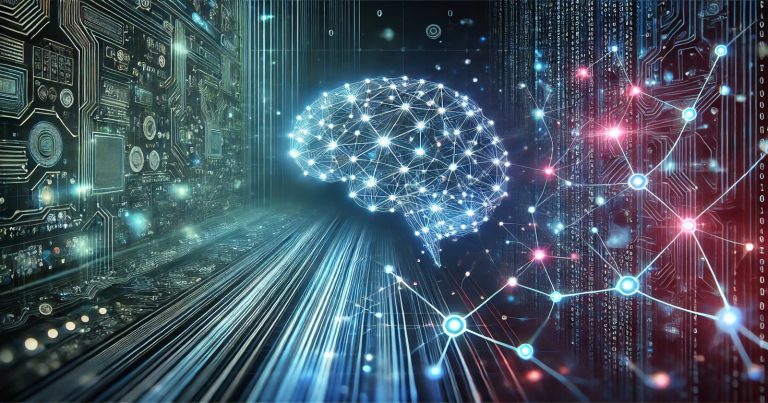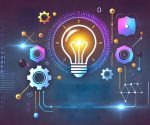Overly simplistic, read more Neural network machine learning, which means a computer learns like a human brain. It operates in layers of tiny units called neurons. They form networks that identify patterns in data. Handle, for example, speech, image, and language understanding. Many of the smart tools we use daily are powered by neural network machine learning. It powers deep learning neural network systems, image recognition, voice assistants, and chatbots.
What is Neural Network Machine Learning?
Neural network machine learning is a technology that seeks to develop artificial intelligence that mimics the human brain; this mechanism relies on algorithms to learn from the information it processes. It allows machines to ingest data to create rules without having humans write them. How this system works, its types and how it enables real-world solutions have all been explained in this article through keywords like neural network in artificial intelligence, deep learning neural network, etc.
In deep learning, to solve hard problems, you act on them with many layers. These networks empower machines to see, hear, speak, and make intelligent decisions. Each layer learns a new dimension of the data.
Deep Learning Neural Networks What are They?
More than three layers of a neural network are called a deep learning neural network. These are the input layer, hidden layers and output layer. Each layer learns from its predecessor. They also aid in performing advanced tasks such as face identification, speech detection, and self-driving.
Deep learning uses big data. The more it learns, the better it gets. It layers on top of many inputs (thousands or more) and adjusts and trains until the output is just right. It uses some neural net training, which requires many examples.
Why Deep Learning Is Important in AI?
AI is enabled by deep learning, which sounds better. It can learn things on its own without any human-specific guidance. It powers tools like:
- Google Translate
- Siri or Alexa
- Self-driving cars
- Chatbots
All of these tools employ deep-learning neural network techniques. These tools are for listening, reading, seeing , and making decisions.
Features of Deep Learning Neural Networks
| Feature | Description |
| Multi-layer structure | Learns in steps from simple to hard tasks |
| Large data needs | Needs a lot of data to learn |
| High computing power | Needs strong computers and GPUs |
| Self-learning | Learns from its own mistakes |
| Great for unstructured data | Works well with images, speech, and text |
Neural Networks Explain the Role of Supervised Learning
Supervised learning in neural networks entails providing a system with input and the correct output. It attempts to learn the relationship between them. So, for instance, if you show a whole bunch of cat photos and say “cat,” it learns what cats look like.
That is the initial characteristic of teaching a network. It lays the foundation for future learning. The network can then predict correct answers for new Ðimages or sounds it has never been exposed to.
Architecture and Design of Neural Network
The term neural network architecture refers to how we design layers and neurons. To design changes based on the task. Well-architected networks are smart and fast.
What is the Architecture of Neural Networks?
The architecture of a neural network is the arrangement or design of a neural network. It contains information about how many layers are there, how many neurons are there in each layer, how they are structured, how the data passes through them, etc. It’s like a house, where the blueprint is important when building the house. Poor plan, poor results.
Different tasks require different kinds of structures. The architecture also determines how long the training takes and how well the network learns.
Neural Network Design Types
There are many designs. The most used ones are:
- Feedforward neural network: Data travels in a single direction. It is the simplest one.
- RNN: It keeps a memory of previous data. Time-based tasks are good in many ways, such as through language and sound.
- Convolutional neural network (CNN) — Usually preferred for images.
- Radial Basis Function (RBF) network: Performs for pattern and speech recognition.
- Neural Network Building Blocks: Data Selection, Pagination and Architecture
- Input Layer: accepts the data (text, image, number).
- Hidden Layers: Carry out all of the work. They learn features.
- Output Layer – Provides answer.
- Activation Function – Determines whether or not a neuron should “fire”.
- Loss Function: Measures how incorrect the answer is.
- Optimizer – Attempt to correct errors using the neural network algorithm.
Neural Network Machine Learning Process
However, if providing a struggling child with a reference to look at is how they learn, this empirical type of asking a neural network what to do is how machines learn from data. Like humans, this approach is towards a logical path, where each step allows the machine to perfect how to solve problems.
The learning process: how does that work
Let’s take it to some simple steps. This method functions in supervised machine learning in neural networks, where we train the machine through instances.
Input Stage
- The Machine Gets Input Data
This data can be numeric, visual, textual or audio.
If we want the machine to learn how to recognize cats, we feed it pictures of cats.
- Forward Propagation
The input data passes from one end of the network to another.
It works layer-wise: input layer →, hidden layers → output layer.
The neurons are doing little math tasks in each layer.
They validate data, apply activation functions, and pass results on.
- Prediction Output
In the end, the machine provides an answer.
If the task was to detect a cat, it might say: “Yes, this is a cat.
- Compare with Correct Answer (Loss Function)
Then, the machine checks whether it has found the right answer.
It uses something called a loss function to tell how wrong it was.
If the answer is wrong, the value will be high.
- Back Propagation
Now, the machine retraces its steps.
It tries to fix its mistakes.
It modifies each neuron’s weight (importance) through a neural network algorithm such as Gradient Descent.
- Repeat Many Times (Training)
This loop happens many times.
The machine gets smarter with each loop.
This process is known as neural network training.
| Step | What Happens |
| Input | Machine gets data like pictures or text |
| Forward Pass | Data moves through the network |
| Output | Network makes a prediction |
| Compare Answer | Checks if it got the right result |
| Backward Pass | Fixes errors using learning algorithm |
| Repeat | Keeps learning from more data |
Neural Network vs Machine Learning
People often get confused between these two. But they are not the same. Let’s clear it up.
Neural network vs machine learning is like asking what is fruit vs apple. Machine learning is the bigger group. Neural networks are just one part of it.
- Machine learning: The system learns from data. Includes many methods like decision trees, SVM, and neural networks.
- Neural network: A way to do machine learning using brain-like structures.
So, all neural networks are machine learning. However, not all machine learning is a neural network.
| Feature | Machine Learning | Neural Network Machine Learning |
| Techniques used | Many methods | Only neural networks |
| Data needs | Small or large | Usually large |
| Complexity | Less | More |
| Power | Medium | High |
| Learning type | Rule-based or learning-based | Learning-based |
Relevance to ACCA Syllabus
With the growing relevance of neural network machine learning within the ACCA syllabus, it is an important topic in strategic business reporting (SBR) and advanced performance management (APM) papers. ACCA students must learn the role of technology in financial decision-making, audits, and risk analysis. Understanding how a neural network operates allows one to assess automated systems deployed in an internal control and fraud detection context.
Neural Network Machine Learning ACCA Questions
Q1: How does a neural network fit into performance management?
A) What is the Generation of tax computations
B) Detection of fraudulent transactions
C) Calculating depreciation
D) Consolidation of accounts preparation
Ans: B) Detecting fraudulent transactions
Q2: What is a node typically doing in neural networks?
A)Print financial statements
B) Demonstrating independent policy judgment
C) Data processing and transmission
D) Auditing payroll records
Ans: C) Data transmission and processing
Q3: Which ACCA subject focuses on using new technologies like machine learning for decisions?
A) Taxation (TX)
B) STRATEGIC BUSINESS REPORTING (SBR)
Option (C): Performance Management (PM)
D) APM (Advanced Performance Management)
Ans: D) Advanced Performance Management(APM)
Q4: How are neural networks useful in internal audit?
A) By means of physical stock verification
B) Learning new trends in big data
C) Emerging with task sector standards
D) By means of interest rate computation
Ans: B) By processing the datasets and detecting anomalies
Q5: Which concept in ACCA’s digital syllabus is most closely related to neural networks?
C) Financial Lease Classification
B) Blockchain transaction validation
C) Automate test of audit of audit
D) Standard costing method
Ans: C) Audit testing can now automated
Relevance to US CMA Syllabus
It includes analytics and technology integrations, part of the US CMA syllabus, particularly key areas of Part 1: Financial Planning, Performance and Analytics. Neural network machine learning is essential for CMA candidates to critically examine decisions made from data, evaluate forecasting, and assess pattern recognition to reinforce strategic planning and performance management.
Neural Network Machine Learning CMA Questions
Q1: What do you think is the biggest advantage of neural networks in managerial accounting? A) Direct material pricing
B) Predictive expense behaviour modelling
C) Manual invoice generation
D) Historical tax filing
Ans: B) predictive cost behavior Modeling
Q2: What does the “hidden layer” refer to in neural network machine learning? A) Unreported financial data
intermediate computation nodes)
C) General ledger accounts not in usage
D) Deferred revenue entries
Ans: B) Intermediary computation nodes
Q3: How do neural networks assist strategic cost management? A) Decreasing the standard cost rate
B) Predicting customer demand with greater accuracy
C) Posting sales data by hand
D) Passing budgets without scrutiny
Ans: B) More accurate forecasting of customer demand
Q4: What data types are needed for a neural network to predict patterns? A) Past financial and non-financial information
B) Only balance sheet data
C) External audit reports only
D) Manual transaction slips
Ans: A) Past financial data and non-financial data
Q5: Which topic of CMA is most improved by neural network machine learning? A) Cost Allocation Methods
B) Budgeting Techniques
C) Performance Measurement and Analytics
D) Ethics in Business
Ans: C) Performance Measurement and Analytics
Relevance to US CPA Syllabus
Emerging technologies are part of the AUD and BEC on the US CPA exam. Even in IT systems understanding, risk identification, and audit analytics, neural networks are quite relevant. CPA candidates must assess automated systems and validate that financial reporting is reliable in new data-driven environments.
Neural Network Machine Learning CPA Questions
Q1: What is an important use of neural networks in the audit world? A) Review journal entries manually
B) Massive data set automated risk detection
C) Manual petty cash reconciliation
D) Preparing trial balances
Ans: B) Automated risk detection in large data sets
Q2: What CPA section relates to knowledge of machine learning in business environments? A) REG
B) FAR
C) BEC
D) ETH
Ans: C) BEC
Q3: What component of neural networks updates the weights inversely based on the gradient of loss? A) Output layer
B) Input layer
C) Backpropagation process
D) Source document
Ans: C) Backpropagation process
Q4: Why should CPAs care about neural networks?
A) To update tax codes
B) For the analysis of data security risks
C) Prepare general ledgers by hand
D) For morality replaces human judgment
Ans: B) For Data security risk analysis
Q5: Neural networks can assist CPAs with which of the following functions? A) Filing tax returns
B) Posting journal entries
C) Carrying out continuous audit
D) Preparation of trial balance
Ans: C) Continuous auditing
Relevance to CFA Syllabus
Neural networks are incorporated into the CFA exam under multiple provisions, including Quantitative Methods, Fintech in Investment Management, and Portfolio Management. Neural networks help recognize patterns associated with trading signals, risk prediction, and behavioural finance, all in line with CFA’s investment-centric training.
Neural Network Machine Learning CFA Questions
Q1: In what way do neural networks assist with investment analysis?
A) Calc. statutory tax rates
B) Predicting Market movements through massive data
C) By manually creating employment data
D) Preparing IPO documentation
Ans:B) Predicting Market movements through massive data
Q2: What CFA topic includes applications of neural networks?
A) Fixed Income Analysis
B) Portfolio Management & Wealth Planning
C) Alternative Investments
D) Taxation Policies
Ans: B) Portfolio Management & Wealth Planning
Q3: Regarding how neural networks can be applied in risk management, what is one specific use?
A) Completing compliance checklists
B) Behavioral prediction of credit defaulter
C) Preparing budget reports
D) Rebalance a portfolio by hand
Ans: B)Behavioral prediction of credit defaulter
Q4: Which CFA quantitative method are neural networks a type of?
A) Linear Regression
B) Time Value of Money
C) Supervised Learning Models
D) Mean-Variance Optimization
Ans: C) Supervised Learning Models
Q5: What do you do with “training data” in a neural network?
A) Ignores it after first use
B) It is stored in the balance sheet
C) Patterns are detected to ensure accuracy
D) Randomly deletes noise
Ans: C) Recognizes patterns to enhance accuracy


